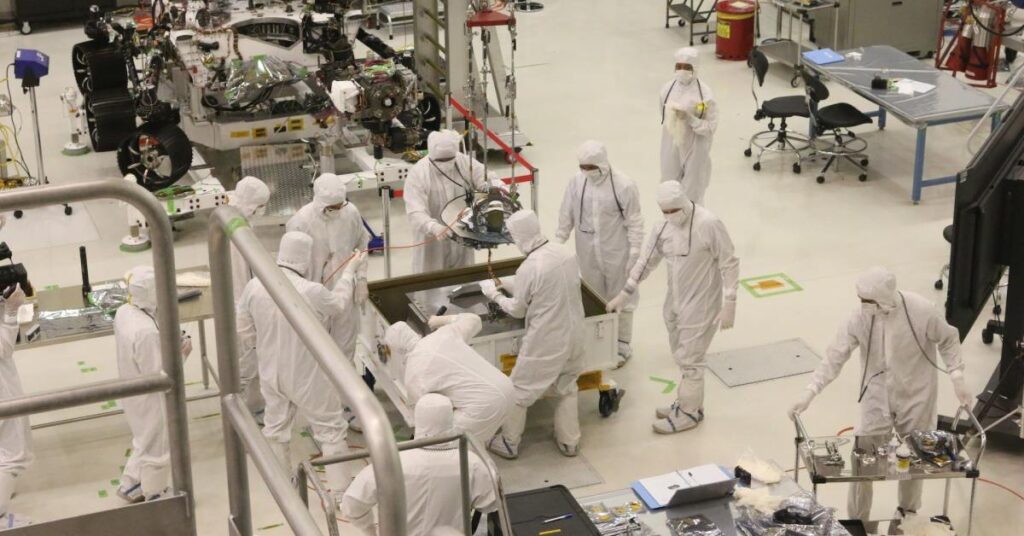
How to Choose an Online MBA
Online MBA programs make their degrees available to everyone everywhere, [...]

Let’s say you’re a low-level local bureaucrat helping a nurse convert a dangerous construction site into a park. Sure, it’s a ridiculous scenario—something you’d see in a sitcom, maybe—but what would your first step be? Before taking pictures, going to the board, even before being elected deputy director of the project, the first thing you might do is earn a Master of Public Affairs (MPA or MPAff).
If your interests lie beyond local government, that’s OK too; an MPA will prepare you for opportunities both in and beyond City Hall. In this guide to a Master of Public Affairs we’ll tell you what you need to know about the MPA degree, including:
Different universities offer different graduate degrees in public affairs. Some offer a Master of Public Affairs (MPA), others a Master of Public Administration (also MPA), and others still a Master of Public Policy (MPP). As if that weren’t confusing enough, there are no fixed distinctions among these degrees. Different schools define the degrees differently, so that an MPA offered by one might be virtually indistinguishable from an MPP offered by another—or they could be entirely different, or somewhere in between.
Some schools offer more than one of these degrees, and when they do, they typically articulate a difference between them. Pepperdine University, for example, offers both a Master of Public Administration (which it describes as a terminal professional degree) and a Master of Public Policy (which it describes as a multi-disciplinary degree preparing students for PhD study). University of California – Berkeley explains that its Master of Public Affairs stresses “innovation and leadership skills” for mid-career professionals, while its Master of Public Policy focuses more on “rigorous quantitative, analytical, and leadership skills.” The University of Michigan – Ann Arbor recently decided to replace its Master of Public Administration program with a Master of Public Affairs.
The takeaway here is this: depending on the school and the curriculum, any of these three degrees might be the one best suited to your career goals. The only way you’ll know which is best for you is to:
Having an MPA can be extremely beneficial to those looking to advance careers in public service. MPAs typically find work in the following sectors:
Does the inclusion of private businesses on this list surprise you? Some companies regularly interact with public sector entities and need the sort of expertise an MPA provides, especially around:
Most MPA programs require applicants to accrue some experience in public affairs work before entering the program. In fact, these programs are often designed for mid-career professionals looking to bolster their skills and résumés rather than for freshly minted undergraduates. A significant number of MPA students remain with their current employers after graduation, using the degree to springboard to a more responsible, better-paying position. For those seeking new opportunities, MPH programs provide numerous chances to network with potential new employers.
At a bare minimum, you will need a bachelor’s degree to be considered as an MPA candidate. Your undergraduate major need not be in a specific field. Successful MPA applicants often major in one of the following areas:
Some schools require incoming students to have completed prerequisite courses prior to commencing graduate study. These courses usually include:
Additionally, as previously stated, most MPA programs require some post-undergraduate professional experience in public affairs. Many schools also require:
Every school is going to look great on paper with their curated facts and statistics, but how do you go about choosing the right one? As you review potential programs, the best questions to ask are:
There’s really no perfect answer to these questions, but asking them at the beginning of your program search will help the decision-making process.
Only you can determine the best program for your situation, but there are ways of weeding out ones that aren’t worth the time.
First, make sure the school is accredited by checking its U.S. Department of Education accreditation status. Next, find out whether the MPA program is accredited by the Network of Schools of Public Policy, Affairs, and Administration (NASPAA). The NASPAA administers “a voluntary, peer review process, which signals that a program has undergone a rigorous mission- and outcomes-based process, and made a long-term commitment to providing the best in public service education.” NASPAA accreditation is valuable but not essential; some top programs—Princeton University‘s, for one—do not have NASPAA accreditation. With or without accreditation, a Princeton degree usually impresses potential employers.
Finally, U.S. News and World Report rankings can be helpful. You can argue over how accurate these rankings are, but there’s no argument over how influential they are in creating public perceptions, including those all-important perceptions of potential employers.
We have listed below a few of the best graduate schools for MPA degrees:
The Indiana University – Bloomington‘s O’Neill School is US News and World Report‘s top-ranked public affairs program (tied with Syracuse University). It’s accredited by the NASPAA, and is offered both on-campus and online.
According to the university, students “learn how to address society’s complex, interconnected problems through a traditional public administration and policy analysis curriculum blended with recent academic advances in leadership and governance. And, you’ll graduate with the skills you will need for a career in any sector—public, private, or nonprofit.”
Requirements in this two-year program include:
Fellowships are a great way to offset the cost of your MPA at Indiana University; 50 percent of students use them to receive aid. Other financial assistance programs include:
Though not NASPAA-accredited, Princeton University is ranked tenth on U.S. News and World Report‘s list. This on-campus-only program takes two years to complete. According to Esteban Rossi-Hansberg, the program’s faculty chair, “The MPA program is for a diverse, international and talented group of individuals who are all committed to careers in public life.”
Requirements include:
Princeton offers both need- and merit-based grants; over 80 percent of students receive full scholarships. The rumors are true: you can go to a prestigious school and still graduate without too much debt. The school does not offer research or teaching assistant positions because it wants students to focus entirely on their studies.
Tied with Princeton on the US News and World Report list, The University of Texas at Austin‘s LBJ School of Public Affairs offers an NASPAA-accredited on-campus program. The school describes it as “the first graduate public affairs program to blend academic theory with practical experience—exposing students to diverse opinions and real public life challenges.”
Students must complete 48 credit hours (core courses and electives) and an internship. The University of Texas prides itself on being affordable and offers many tuition assistance opportunities, including:
UC Berkeley offers a 12- to 14-month program designed specifically for those already in the workforce. Students have an opportunity to complete parts of the program online. U.S. News and World Report ranks it seventh; and is not accredited by NASPAA.
Berkeley offers an excellent program for students who don’t have two years to devote to a graduate degree. According to Berkeley’s MPA page, “The focus of the degree is on policy analysis combined with deep engagement with questions of organizational leadership and ethics, innovation, economic analysis, and strategy.”
The program is comprised of:
The first set of core courses is taken in the summer and must be completed on-campus. The rest of the requirements may be completed either online or on-campus. Berkeley does not offer much tuition assistance to students, although it does offer a fee payment plan.
University of Michigan – Ann Arbor offers its MPA on-campus only. The program has been completely revamped in recent years, with positive results: the program catapulted to the seventh spot on U.S. News and World Report‘s list of top public affairs schools.
Michigan sums up the program this way: “Two semesters of carefully designed coursework in public policy creation and analysis; public sector and nonprofit leadership; economics; policy writing; and the social, political, and ethical aspects of public policies and programs—all crafted to meet the needs and goals of experienced professionals.”
Requirements for the program include completion of:
Financial assistance from the University of Michigan, which is not accredited by NASPAA, includes:
Earning a Master of Public Affairs typically takes one or two years for full-time students, depending on the program. Part-time programs take longer.
While completing a master’s degree usually takes less time than a bachelor’s, don’t expect it to be easier. Your courses will be far more rigorous. In your MPA program, you will study:
Even if you don’t wind up working in public affairs, these skills will serve you well.
Many schools also require students to complete a public administration or public affairs internship. Options vary widely, from government public service to nonprofit organizations.
MPA students are not required to pass any standardized professional exams or earn any certifications to earn their degrees. Typically, students complete the following steps to graduate:
If you want to advance your career in public affairs, policy, and administration, an MPA should serve you well. The best candidates are those who have work experience, and who plan to use the degree to bolster their resume and take on a leadership role. If this sounds like you, then “get on your feet. Get up and make it happen!”
Questions or feedback? Email editor@noodle.com

Online MBA programs make their degrees available to everyone everywhere, [...]

In 2004, Burton D. Morgan Foundation and other Cleveland organizations [...]

International marketers have to consider local language(s), local norms and [...]

Organizations must design facility layouts and workstations in a way [...]

Many aspiring entrepreneurs understand the basic idea that the firm [...]
Categorized as: Public Administration & Policy, Business & Management